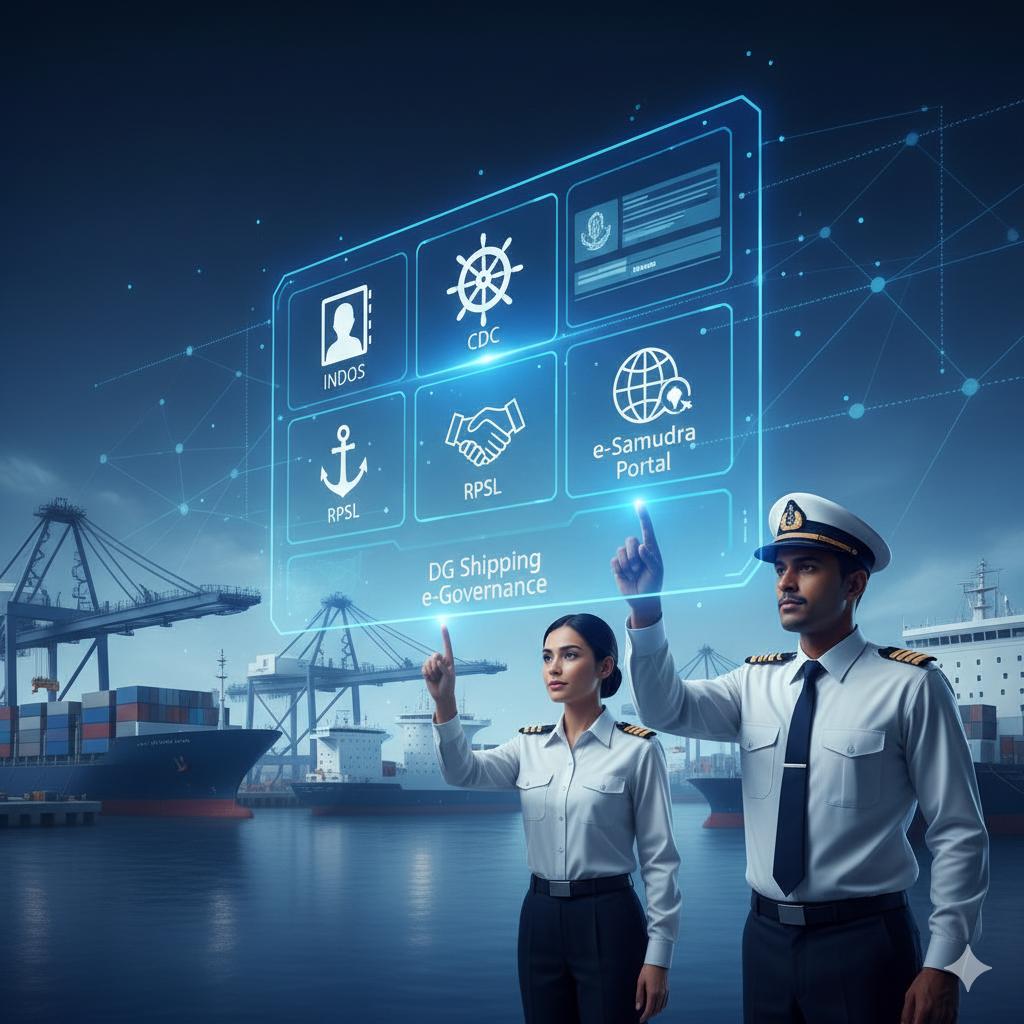The Directorate General of Shipping has digitalized all its key seafarer services through a series of online platforms. This guide will break down the essential DG Shipping e-governance modules you’ll need to interact with, based on Chapter 7 of the official Crew Manual. Using the correct DG Shipping e-governance modules for all crew documentation and recruitment processes is mandatory for ensuring full compliance with maritime regulations.
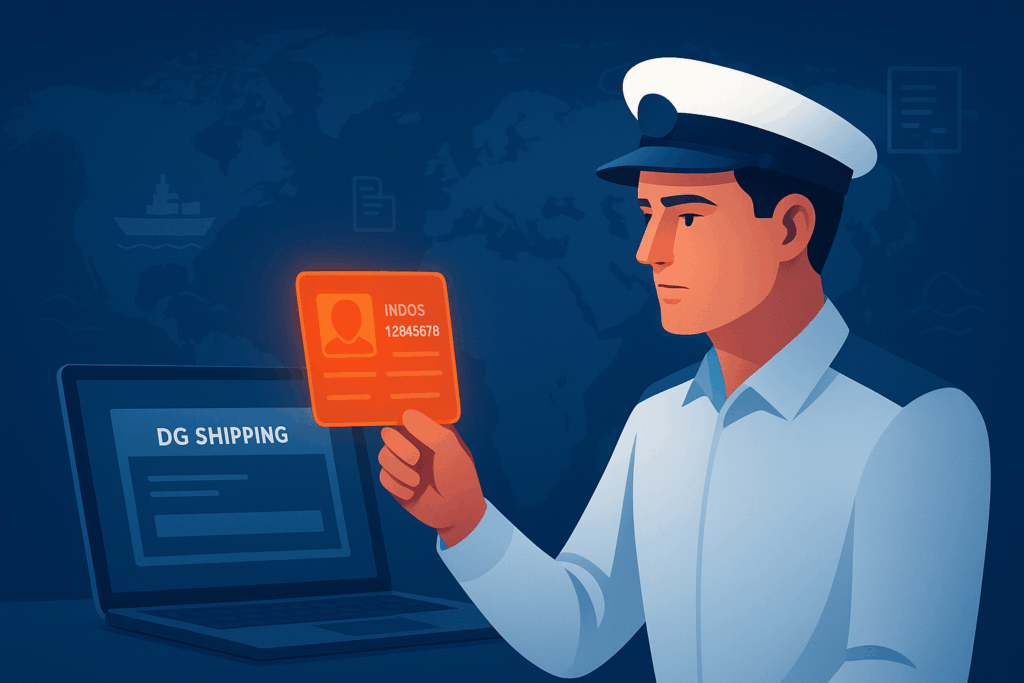
What Are the Foundational DG Shipping E-governance Modules for Seafarer Identity?
This section covers the two primary modules that form the basis of a seafarer’s digital identity. The effective use of these DG Shipping e-governance modules is the first step in any maritime career.
How Does the INDOS System Module Work?
- Purpose: The main function of the Indian National Database of Seafarers (INDOS) module is to provide a unique, lifelong identification number for every seafarer.
- Mandatory Requirement: An INDOS number is mandatory before anyone can undergo pre-sea maritime training at a DG-approved institute.
- Process: An online module has been introduced to digitalize the application process for an INDOS number. The detailed workflow for this specific part of the DG Shipping e-governance modules is explained in Chapter 6.1 of the Crew Manual.
What Services Does the CDC Module Offer?
- Services: The Continuous Discharge Certificate (CDC) module provides three main services: new applications, applications for a duplicate CDC, and applications for a replacement CDC.
- Digital Process: This module has moved the entire CDC application and management process online, making the DG Shipping e-governance modules fully digital.
- Workflow Reference: The detailed workflows for each of these services can be found in Chapter 6.2 of the Crew Manual. Understanding this part of the DG Shipping e-governance modules is crucial.
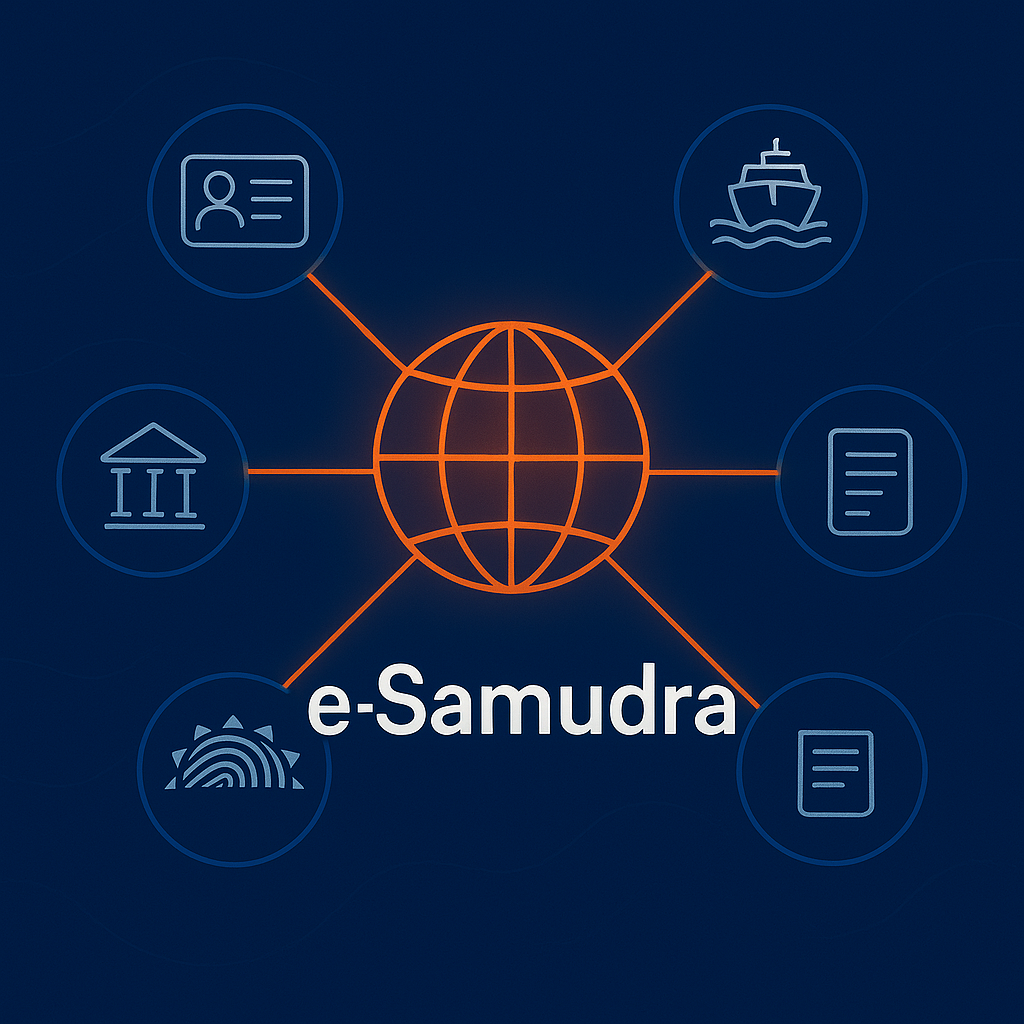
What is the e-Samudra Portal and Which DG Shipping E-governance Modules Does it Include?
This section details the comprehensive e-Samudra portal, which is a collection of many DG Shipping e-governance modules.
What is the Scope of the e-Samudra Portal?
- Purpose: The e-Samudra portal is a comprehensive platform being developed to cater to the various seafarer-related processes.
- Services Covered: The modules being developed under this portal will cover services for both Indian and foreign seafarers. This includes the creation and updating of seafarer profiles, creation of profiles for sailing vessel seamen, and the issuance of new, duplicate, and renewed ID cards, Certificates of Competency (CoC), Continuous Discharge Certificates (CDC), and Certificates of Proficiency (CoP).
- Integration: The e-Samudra portal will be integrated with various internal portals (like those for shipping entities and financial assistance) and external applications such as UIDAI/Aadhaar and banks. This integration enhances all DG Shipping e-governance modules.
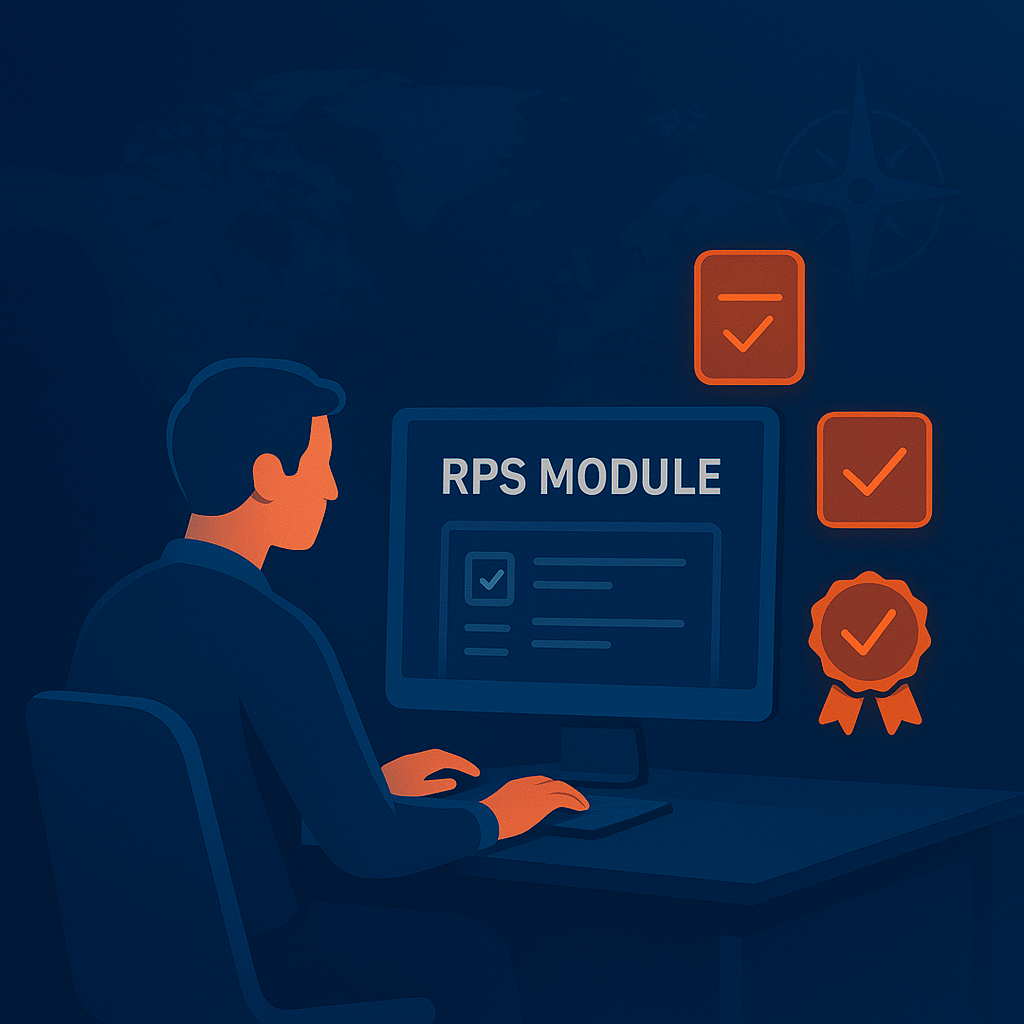
How Does the RPS Module Regulate Recruitment Agencies?
This section explains the specific DG Shipping e-governance modules designed for manning agencies involved in the recruitment and placement of seafarers.
Why is the RPS Module Mandatory for Manning Agencies?
- Legal Requirement: Yes, all firms and agencies involved in the recruitment and placement of seafarers must obtain registration from DG Shipping under the Merchant Shipping (Recruitment and Placement of Seafarers) Rules An e-governance platform has been created to cater to these services.
- Processes Covered: This platform manages various processes for Recruitment and Placement Service (RPS) activities. These include the creation of an RPS profile, approval of the RPS, renewal of the RPS, changes of details in the RPSL license, grievance redressal, and correction of seafarer details. These are all key functions of the DG Shipping e-governance modules.
What is the Process to Apply for a New RPSL License Using These DG Shipping E-governance Modules?
- Step-by-Step Guide: The application is a 15-step online process. It involves visiting the DG Shipping website, navigating to the “Application for RPSL License” section, and filling out a multi-part form that includes the Company Profile, addresses, authorized signatories, manning agreements, and bank details. After entering payment details and selecting a Recognized Organization, you submit the application to the DSEO Branch to get a Reference Number. Upon approval, the system will send a user ID and password to the email address provided. This is the most detailed of the DG Shipping e-governance modules.
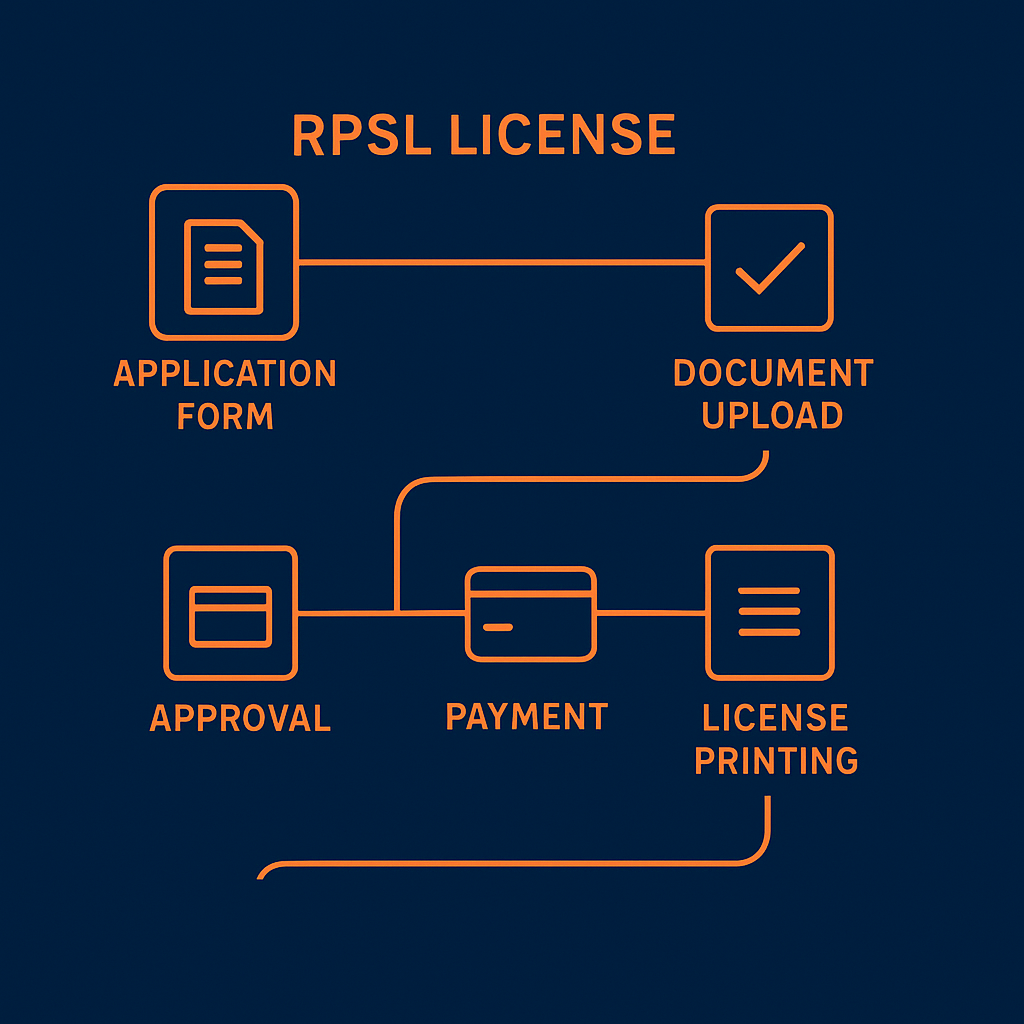
How Can You Manage Your License Through the DG Shipping E-governance Modules?
- Viewing Applications: You can view the status of a submitted application by navigating to the “View Application” link on the RPSL page and entering your application number and date.
- Printing License: After your license is approved, you can print the certificate by logging into the e-governance portal with your DGS-provided credentials, navigating to the RPSL License inbox, and using the “Print” button.
- Renewals and Inspections: You can apply for both renewal and annual inspections by logging in and navigating to the “Renewal Inspection” or “Annual Inspection” links under your license notifications.
- Updating Details: The workflow for updating your company profile or changing your name/address is also done after logging in. You can navigate to the “Change of Address/Change of Name” link or the “Company Profile” section to submit the required changes.
How Are Seafarer Engagement and Contracts Managed in the RPS Module?
- Specified Categories: You can submit applications for specified categories by navigating to the “Submit Application” submenu, selecting a category, filling in the details, and proceeding to upload the required documents. The status can be viewed via the “Upload Documents and View status” link.
- Contract Management: The module allows for managing the entire contract lifecycle. This includes procedures for canceling a contract, updating sign-on ship details, updating onboard change details, and updating sign-off ship details.
- AoA and Nil Declarations: The module provides specific workflows for submitting Articles of Agreement (AoA) for Indian ships via the “Sign-On Shore Indian Ship” submenu. You can also file Nil Declarations for months with no recruitment activity by selecting the month and year and clicking “Submit”.

How Does the Transition to New Systems Affect the DG Shipping E-governance Modules?
- Future Development: Multiple new e-governance platforms are under development. This includes four new modules for the welfare of seafarers: a 24×7 Grievance Redressal System, a Crisis Management System, a Recruitment and Placement License module, and a Maritime Training Institutes module. Additionally, an ERP solution is being developed for the SPFO and SWFS.
- Data Management: In the future, data will be managed and stored in cloud-based DC (Data Centre) and DR (Disaster Recovery) sites. External applications will be integrated through APIs. This transition plan shows the future of DG Shipping e-governance modules. The development of these DG Shipping e-governance modules is ongoing.
What is the Future of DG Shipping’s E-Governance?
In conclusion, the DG Shipping e-governance modules represent a complete shift to a digital-first approach for maritime administration. From the foundational INDOS and CDC modules for individual seafarers to the comprehensive RPS module for recruitment agencies, every process is now managed online. The ongoing development of the integrated e-Samudra portal and the transition plan for new welfare and crisis management systems show a clear commitment to future-proofing this digital ecosystem. For both seafarers and agencies, mastering these online platforms is no longer just a convenience—it’s a mandatory requirement for a compliant and successful career in the modern maritime industry. For expert assistance in navigating these modules, please feel free to contact us.

